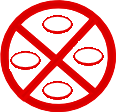Illustrations of the Past 44 South Village
In the process of our research, we heard a lot of interesting stories, such as swimming in the creek next to the village and railroad tracks of the coal transporting truck. But there is a big difference between the past and the present. We are trying to tell the stories of the Forty-fourth South Village through old maps, aerial photographs, old photos and artifacts.
Swimming Creek - Liu Kong Canal
When we visited the Museum of Military Dependents' Villages and interviewed people related to the Village, we heard from the guides and villagers that as a child, they often went swimming, caught shrimps and fished up clams in the creek next to the village. It is hard to imagine that there had been a creek for people to play in the water in this bustling place near Taipei 101 in the Xinyi District. In the Taipei City Map of 1969, we actually found the artificial creek named Liu Kong Canal, which flowed from the National Taiwan University in Gongguan, via the gate of Sanxing Elementary School, and continued going straight along Keelung Road and then a tributary turned right at Xinyi Road and flowed to the front of the Village. We can imagine the wonderful time the kids had when they jumped into the creek at the gate of Sanxing Elementary School and swam back to the Village, and the fun they had when they took iron basins as boats and floated on the water.
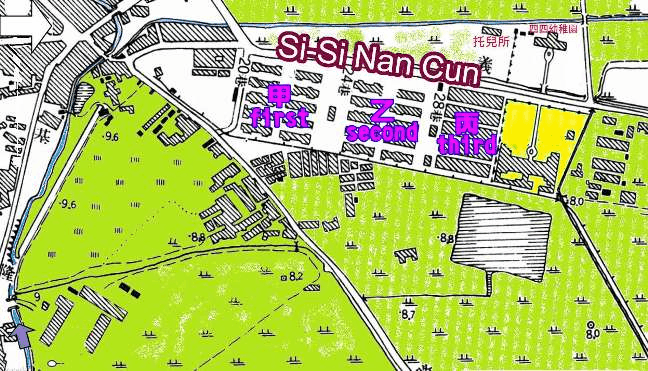
The Forty-fourth South Village Route Map for swimming
Gulumadao
At that time, there was the Dexing coal mine at Lane 600 of Wuxing Street, where located the entrance of Tiao-Mi Historic Trail and a coal-carrying trolley track along Wuxing Street all the way to Alley 7 of Wuxing Street ( at the entrance of Wuxing Street ) where the coal on the trolley was unloaded and transferred to other places. The trolley tracks went through the rear of the Village, and as the coal car passed through the village, people would hear the “gulu-gulu” sound, so the village children called it Gulumadao. When the miners pushing the truck passed by, some of the naughty children would play pranks on them by pushing the trucks.
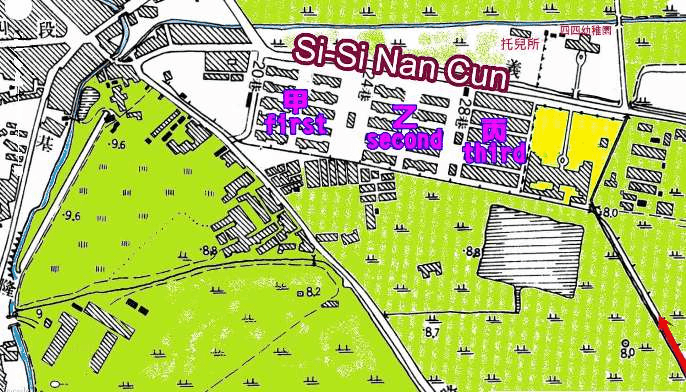
Schematic diagram of Gulumadao track
From another aerial photograph of Taipei in 1957, we can vaguely see that beside the Gulumadao track was a large square pond of Lotus. “At that time, the pond was planted with lotus flowers, and there were lots of lotus seeds in the bottom of the pond. Kids picked lotus seeds and made them into a necklace,” said Mr. Chen Chinghsiang.

Schematic diagram of indoor space of the Village house

“The Arsenal provided each household with a housing space of three or four pings, and between households were bamboo fences filled with yellow soil. Painted sugarcane plates were nailed on the fence surface as partitions, and in addition to the sugarcane plates covering the walls, the exterior was black fish scale plate with black lacquer. The houses offered by the Army were empty like that. Later on, due to population increase and children growing up, the living space was not enough, so the villagers had architects build the stairs and hammocks, and then attached constructions were built outward and upward to increase indoor space,” said Mr. Chen Chinghsiang.
Loft dormers and attached second floor on the Village rooftop


At that time, each household had a house about only three to four pings, without kitchen or toilet inside, and hence the space was insufficient for them. Therefore, the villagers made lofts and dormers. They shut the dormers on rainy days and opened them on sunny days to make brighter indoor space. This special scene of the roofs and attached constructions of second floor made a special roof-by-roof view, which inspired the later design of the green slope landscape of the Culture Park of Military Dependents ' Villages.
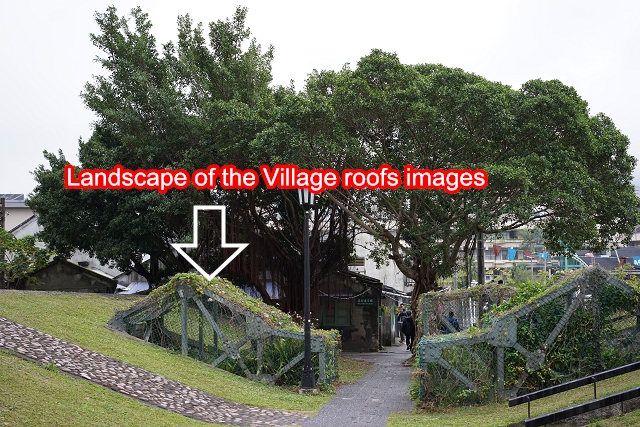
Cannon Ball Lamps VS Bullet Necklace
In the past, due to scarcity of goods, the villagers who worked in the Arsenal would sometimes come back with shells of abandoned cannon balls and made these reusing resources into table lamps. We think such artefacts are creative and environmental-friendly. Mr. Zhang Tianzhi also mentioned that some parents who worked in the Arsenal made a bullet necklace for their son as a gift for him to give to the girl of his heart.
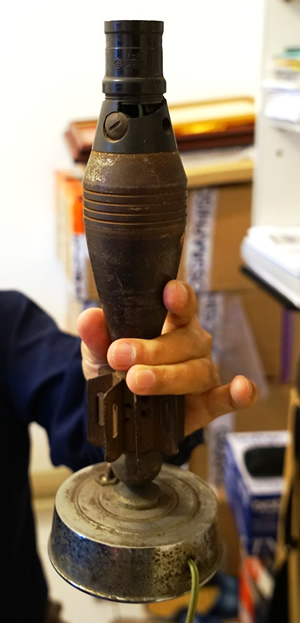 Mr. Chen says his cannon ball lamp is genuine, and the ones in the Museum of Military Dependents’ Villages are remade.
Mr. Chen says his cannon ball lamp is genuine, and the ones in the Museum of Military Dependents’ Villages are remade.
The Forty-fourth Arsenal Emblem VS Combined Logistics Command Sorority Membership Card
The Forty-fourth Arsenal Emblem is seen on arsenal related things, and on the Combined Logistics Command Sorority Membership Card provided by Grandpa Jia, we can see the sign as well.
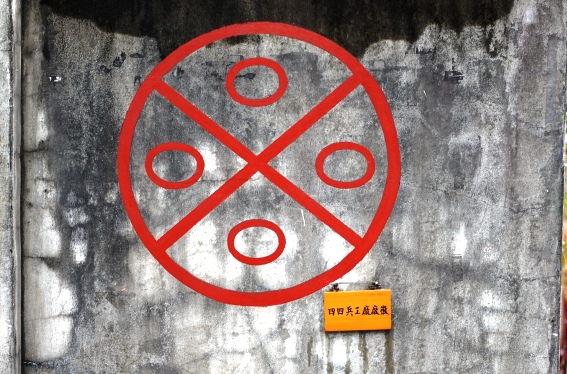
The emblem of the Forty-fourth Arsenal 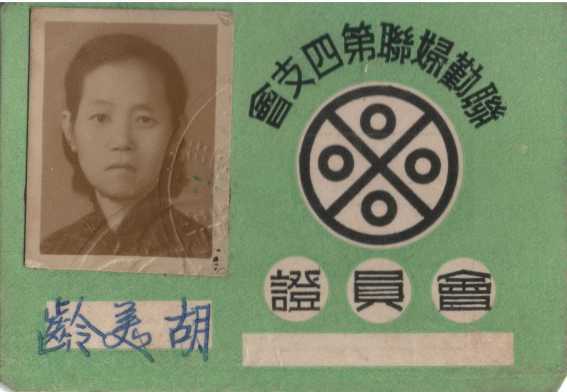
Membership Card of the fourth branch of Combined Logistics Command Sorority
Membership Card of Combined Logistics Command Sorority, provided by Grandpa Jia
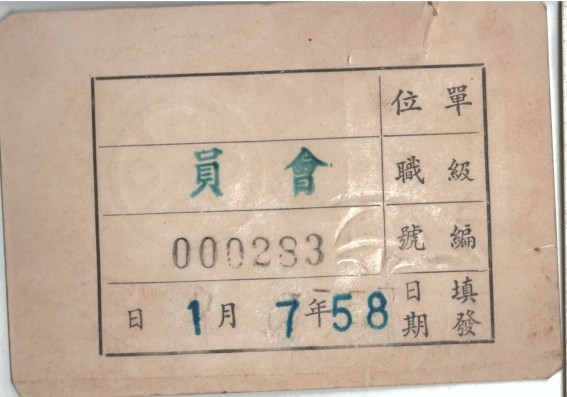
Back of the Membership Card

